Property of a Private European Collector19Sir Peter Blake R.A.Nudinasigned, titled and dated '“NUDINA." 1961-64 P Blake.' on the reverse oil and enamel on Masonite and wood, in artist's frame with attached ornament 33 x 17.7 cm (12 7/8 x 6 7/8 in.) Executed in 1961-64. Full CataloguingEstimate £60,000 - 80,000 ♠ Place Advance BidContact Specialist Kate Bryan Specialist, Head of Evening Sale +44 20 7318 4026 kbryan@phillips.com
Overview 'My main motive for painting is to make magic and to bring pleasure.' —Peter Blake Often referred to as the Godfather of British Pop Art, Peter Blake instigated distinct components of the movement before it had officially been established. Born in 1932 and growing up in Kent, Blake enjoyed the plentiful popular entertainments of the time. Initially studying graphic design for a year at Gravesend Technical College before attending the Royal College of Art between 1953 and 1956, Blake’s interest in both typography and painting became essential themes that he explored throughout his oeuvre. Combining his passion for popular culture – from Marilyn and Elvis, to funfairs, circus, wrestlers and page three print – with a love of medium, experimenting with collage, paint and found objects, Blake created works that were treasures in themselves. An exquisite example of this ingenious practice, Nudina, 1961-1964, fuses a multitude of media, all lovingly encased within a painted frame: a deftly crafted painted surface, translucent jewel-like layers, a wooden picture rail, and a found figurine. The intimate scale of the work makes the piece all the more tangible, relatable, and captivating, further attesting to the artist’s soulful artistic approach. Fantasy Figures Quoting the pictorial vocabulary of celebrity culture and the notion of the adoring, gazing fan from the mid-1950s, Blake furthermore began to portray his troupe of nonconformists, whose personalities and eccentricities imbued the artist’s paintings with their unique character, wit and power. Following from a body of work in which the artist accumulated many invented characters, the Stripper series found a bevy of imagined protagonists from the fringes of society. Embodying stereotypes of the characters they represent – sexiness, flirtatiousness and a beguiling appeal – the Stripper works are celebrated by Blake for their imperfections, and continuously appeared in his oeuvre throughout the 1960s. Nudina, like many of the artist’s anonymous strippers, is a person we will never meet. Facing out of the picture frame, straight on, she is illuminated by the red stage lighting of an underground strip club, holding the diagonal form of a teasing feathered burlesque fan. As such, the figure is representative of the performative women in Blake’s Stripper series, exuding the defiant self-belief of forbidden objects of desire. On this note, Marco Livingstone points out, ‘there is too much tenderness in these pictures for them to be seen as merely lewd, too much strength in these women for them to be dismissed as passive victims and too much personality for them to be dismissed as empty vessels. What comes across, to me at least, is the fullness of their humanity.’i Indeed, Blake was intensely conscious of the antagonistic nature of his works, yet believed that he would also be able to shed light on the more tender side of his secretive haunts and personalities. This prodigious ability to reveal what lay beneath the surface in turn echoed his desire to project a counterpart to his own reserved persona. Like much of Blake’s inspiration and collage works, the visual content for the Stripper series stems from photographic sources, including those found in mass-circulation magazines. Nudina’s indistinct depiction is resonant of a photograph taken in poor light, the chosen contrasting colour palette of black and red namely being reminiscent of the lighting in strip clubs. Sir Peter Blake R.A., Self-Portrait with Badges, 1961, oil paint on board, Tate Collection, London. Gift by the Moores Family Charitable Foundation. © Peter Blake All rights reserved, DACS 2020. Image: Tate, London. A new type of art First engaging with Pop in 1959, Blake’s pictures of the time incorporated collaged elements of photographs of celebrities – mostly musicians and film stars – glued onto hardboard panels, which were brightly painted in primary colours, and executed in household gloss in order to resemb
Property of a Private European Collector19Sir Peter Blake R.A.Nudinasigned, titled and dated '“NUDINA." 1961-64 P Blake.' on the reverse oil and enamel on Masonite and wood, in artist's frame with attached ornament 33 x 17.7 cm (12 7/8 x 6 7/8 in.) Executed in 1961-64. Full CataloguingEstimate £60,000 - 80,000 ♠ Place Advance BidContact Specialist Kate Bryan Specialist, Head of Evening Sale +44 20 7318 4026 kbryan@phillips.com
Overview 'My main motive for painting is to make magic and to bring pleasure.' —Peter Blake Often referred to as the Godfather of British Pop Art, Peter Blake instigated distinct components of the movement before it had officially been established. Born in 1932 and growing up in Kent, Blake enjoyed the plentiful popular entertainments of the time. Initially studying graphic design for a year at Gravesend Technical College before attending the Royal College of Art between 1953 and 1956, Blake’s interest in both typography and painting became essential themes that he explored throughout his oeuvre. Combining his passion for popular culture – from Marilyn and Elvis, to funfairs, circus, wrestlers and page three print – with a love of medium, experimenting with collage, paint and found objects, Blake created works that were treasures in themselves. An exquisite example of this ingenious practice, Nudina, 1961-1964, fuses a multitude of media, all lovingly encased within a painted frame: a deftly crafted painted surface, translucent jewel-like layers, a wooden picture rail, and a found figurine. The intimate scale of the work makes the piece all the more tangible, relatable, and captivating, further attesting to the artist’s soulful artistic approach. Fantasy Figures Quoting the pictorial vocabulary of celebrity culture and the notion of the adoring, gazing fan from the mid-1950s, Blake furthermore began to portray his troupe of nonconformists, whose personalities and eccentricities imbued the artist’s paintings with their unique character, wit and power. Following from a body of work in which the artist accumulated many invented characters, the Stripper series found a bevy of imagined protagonists from the fringes of society. Embodying stereotypes of the characters they represent – sexiness, flirtatiousness and a beguiling appeal – the Stripper works are celebrated by Blake for their imperfections, and continuously appeared in his oeuvre throughout the 1960s. Nudina, like many of the artist’s anonymous strippers, is a person we will never meet. Facing out of the picture frame, straight on, she is illuminated by the red stage lighting of an underground strip club, holding the diagonal form of a teasing feathered burlesque fan. As such, the figure is representative of the performative women in Blake’s Stripper series, exuding the defiant self-belief of forbidden objects of desire. On this note, Marco Livingstone points out, ‘there is too much tenderness in these pictures for them to be seen as merely lewd, too much strength in these women for them to be dismissed as passive victims and too much personality for them to be dismissed as empty vessels. What comes across, to me at least, is the fullness of their humanity.’i Indeed, Blake was intensely conscious of the antagonistic nature of his works, yet believed that he would also be able to shed light on the more tender side of his secretive haunts and personalities. This prodigious ability to reveal what lay beneath the surface in turn echoed his desire to project a counterpart to his own reserved persona. Like much of Blake’s inspiration and collage works, the visual content for the Stripper series stems from photographic sources, including those found in mass-circulation magazines. Nudina’s indistinct depiction is resonant of a photograph taken in poor light, the chosen contrasting colour palette of black and red namely being reminiscent of the lighting in strip clubs. Sir Peter Blake R.A., Self-Portrait with Badges, 1961, oil paint on board, Tate Collection, London. Gift by the Moores Family Charitable Foundation. © Peter Blake All rights reserved, DACS 2020. Image: Tate, London. A new type of art First engaging with Pop in 1959, Blake’s pictures of the time incorporated collaged elements of photographs of celebrities – mostly musicians and film stars – glued onto hardboard panels, which were brightly painted in primary colours, and executed in household gloss in order to resemb

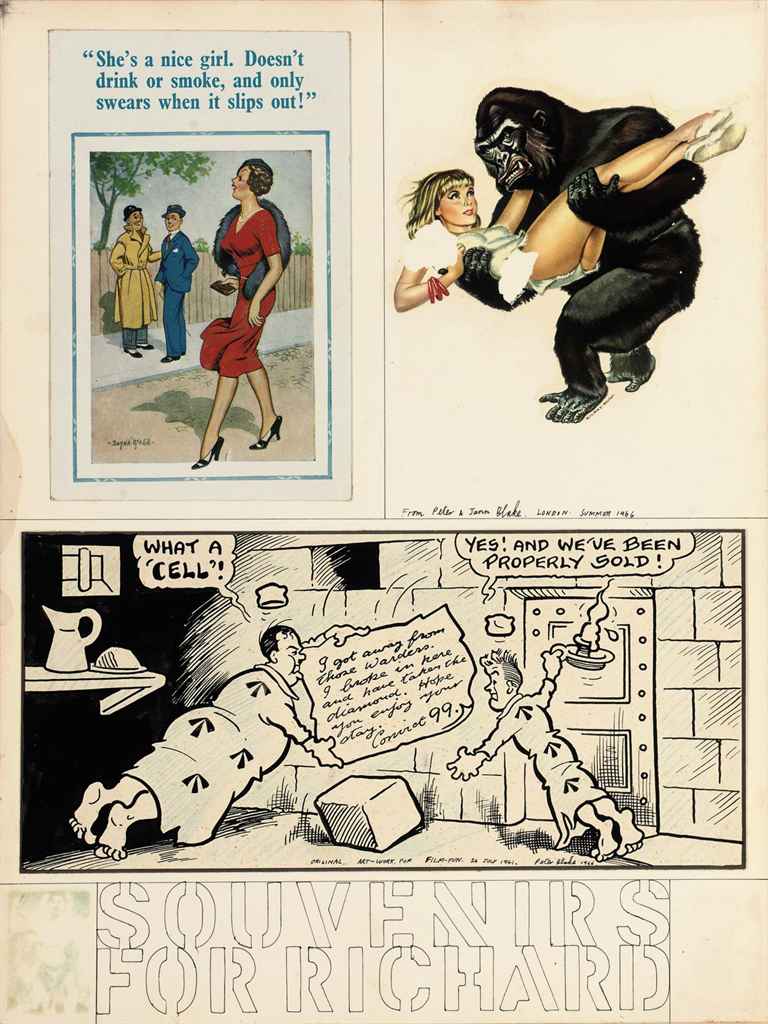
.jpg)
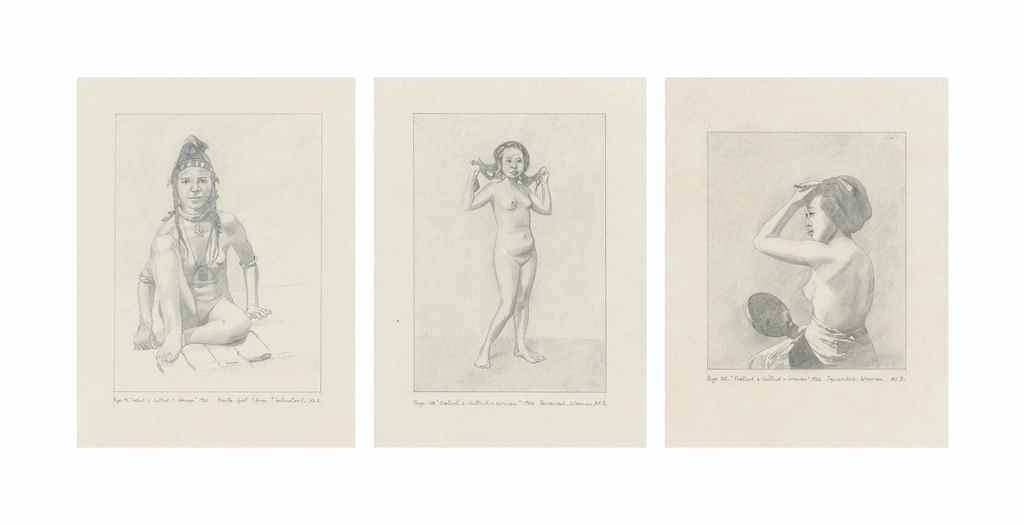


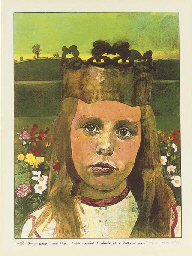

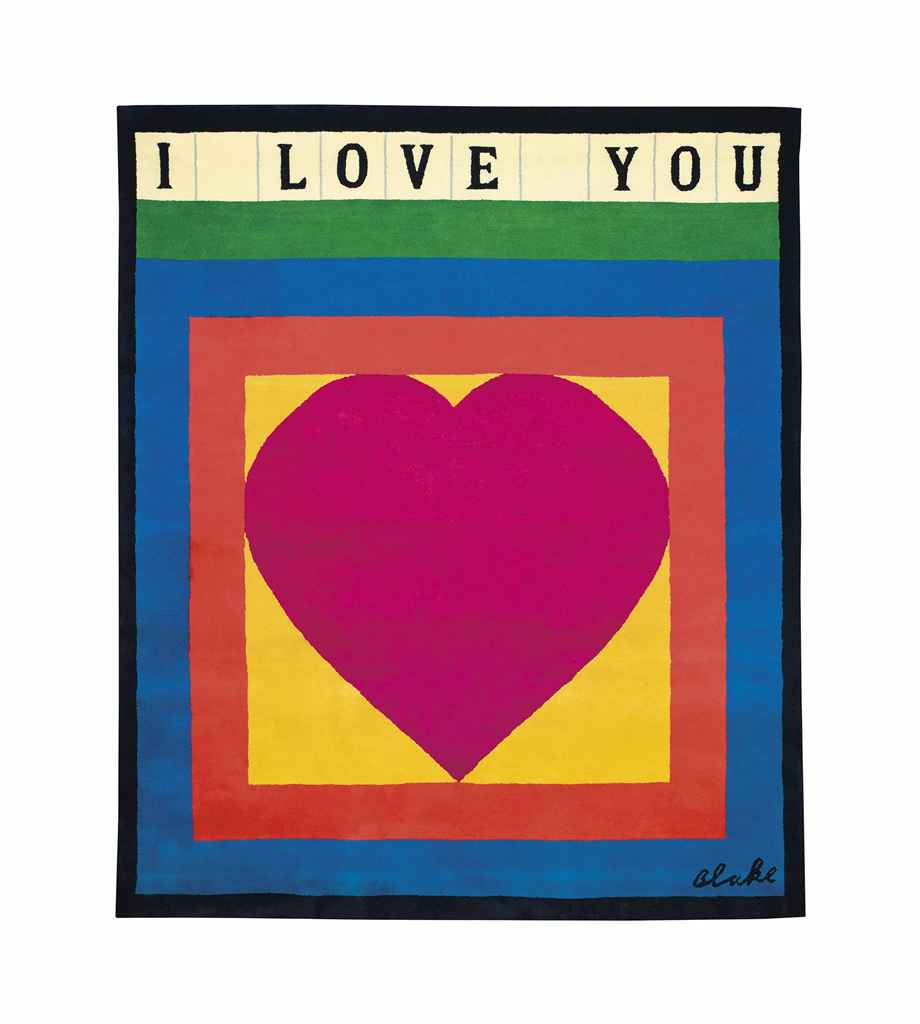
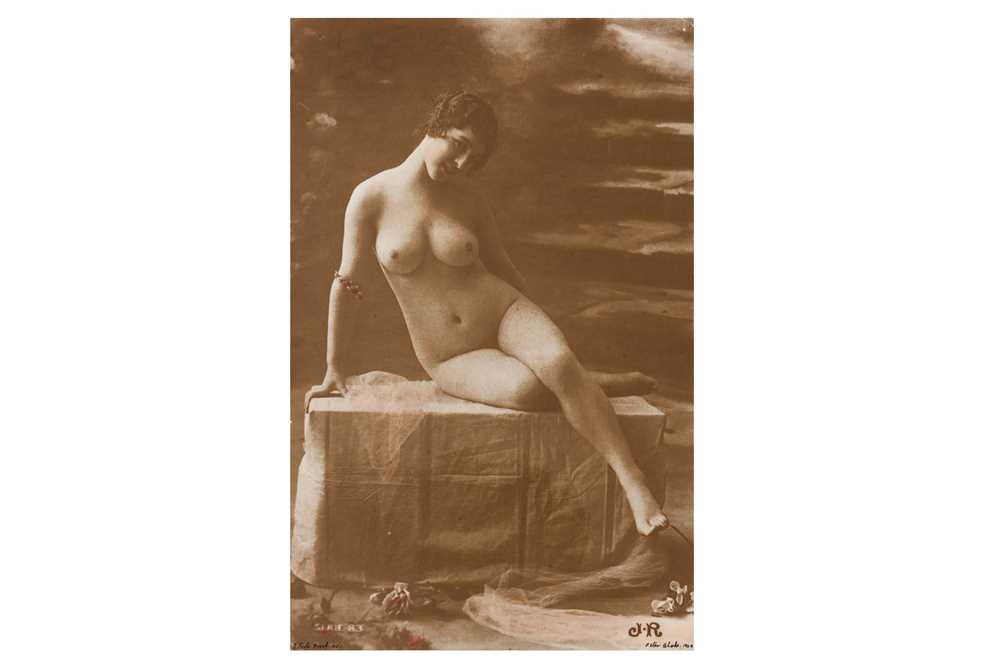
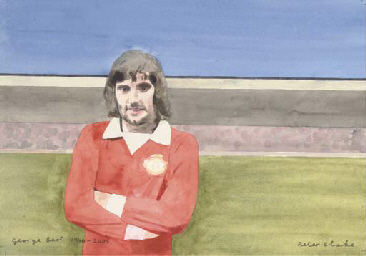
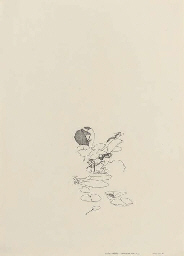
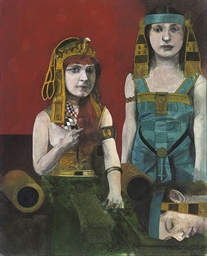
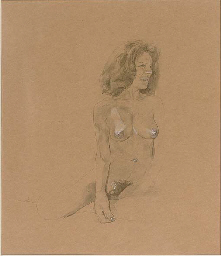
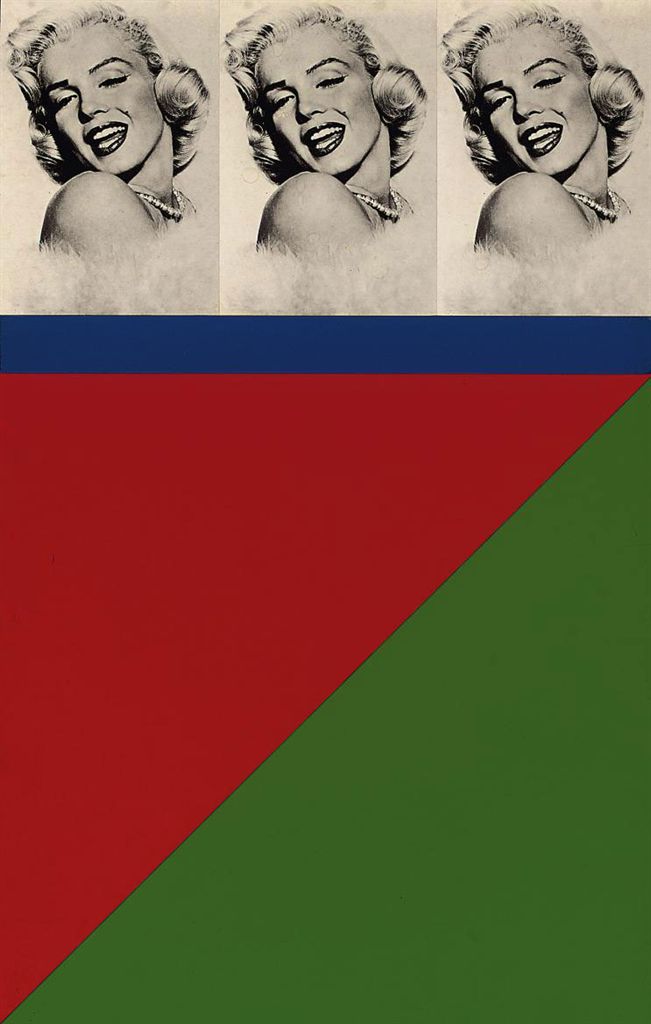
Testen Sie LotSearch und seine Premium-Features 7 Tage - ohne Kosten!
Lassen Sie sich automatisch über neue Objekte in kommenden Auktionen benachrichtigen.
Suchauftrag anlegen